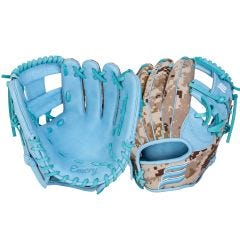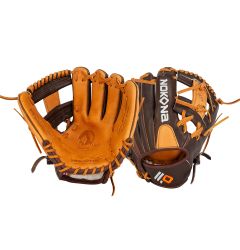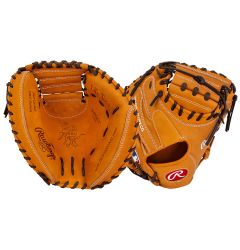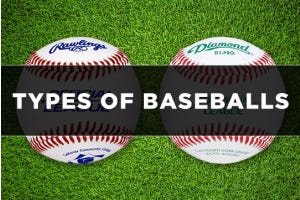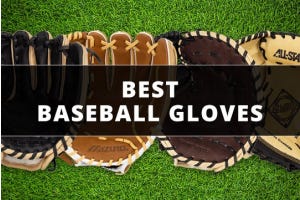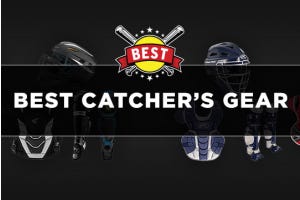Best Baseball Gloves for 13-Year-Olds
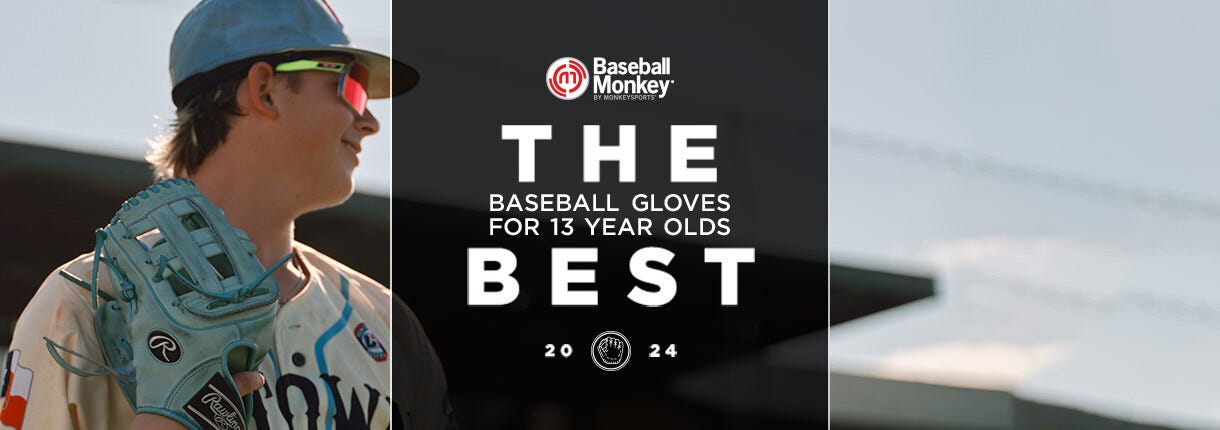
At the age of 13, a player embarks on some of the most crucial years of their baseball journey. These formative times shape their love for the game, and having the right equipment can foster a passion that lasts for years. A well-suited baseball glove can profoundly impact both performance and enjoyment on the field. With a multitude of choices available, navigating the selection process might feel overwhelming. It's vital to consider factors like size, material, and durability to make an informed decision. A properly fitted glove not only enhances comfort and confidence but also aids in skill development, efficient fielding, and injury prevention. This guide aims to simplify the selection process by providing step-by-step instructions on choosing the perfect glove for your young player. Additionally, expert recommendations will help you narrow down options, ensuring you find the ideal glove that matches your child's needs and preferences. Explore our full range of youth baseball gloves to discover the perfect fit for your aspiring athlete.
In this article, we will cover:
Understanding the Importance of a Proper Fit for 13-Year-Olds
The correct glove size is vital for young players' comfort, control, and confidence on the field. Most importantly, size has the greatest impact on a player’s safety and overall enjoyment. A glove that is too small can cause injury to the hand and fingers. A glove that is too big can cause injury to the wrist as the glove snaps backward. A properly fitting glove enhances a player's catching, fielding, and throwing abilities. This improved control fosters confidence, allowing young players to approach the game with enthusiasm and perform at their best without hesitation.
| Age | Catcher | First Base | Second Base / Short Stop | Third Base | Pitcher | Outfield |
| 11-13 | 30" - 32.5" | 11.5" - 12" | 11" - 11.5" | 11" - 11.75" | 11.5" - 12" | 11.75" - 12.75" |
When sizing a glove for your child, consult this chart to ensure you get a size that will allow your child to be successful on the field. When getting your new glove, ensure it fits snuggly on the hand, without being too tight on the fingers and wrist. Also, make sure that the glove is not too long or heavy to hinder the player when they are running or making plays.
Now that you know what size glove to get, head over to shop our youth baseball gloves and find your next glove! If you would like to learn more about glove size, consider looking at How to Size a Baseball Glove for a Kid.
Different Types of Baseball Gloves Suited for 13-Year-Olds
Infield Gloves/Outfield Gloves
In the early ages of youth baseball, many players play multiple positions so infield and outfield-specific gloves are not required. Therefore, there are no youth outfield-specific models as players use the same glove in the infield and outfield. Manufacturers make these gloves with specific features making them perfect for young hands. On youth gloves, the priority is lightweight, ease of break-in, and comfort. For extremely young players, gloves often feature the basket weave web. This web is one of the easiest to close because of the flexibility within the web design. This is also one of the most secure webs, not having any openings for the ball to go through. These make it great for baseball players just starting their playing journey. Once players get a little older, youth gloves are available in a variety of web designs such as I-webs and H-webs. These are the most common web types and are named after the strips of leather that form the shape of an I and an H on the back of the web. For more information on the different web types, consult our Baseball Glove Buying Guide.
Catcher’s Mitts
Youth catcher's gloves, also known as mitts are the most specialized gloves on the baseball field. They differ from regular fielder’s gloves in several ways. For example, they are measured by their circumference, whereas all other gloves are measured by length. A catcher's glove is typically 31 to 34 inches. For sizing information, view our Baseball Glove Size Guide. Catcher's gloves are also heavily padded, especially on the thumb and palm area to absorb the impact of high-velocity pitches and protect the catcher's hand during the game. They also have closed webbing with a deep pocket to ensure the ball stays secure at all times. Youth models often feature a velcro strap to make them adjustable to different-sized hands. To view our complete selection of youth catcher’s gloves, click here.
First-Base Gloves
Youth first base gloves are for young players who want the advantages of a specific first base glove but might not be at the age or skill level for an adult first base glove. Youth first-base gloves have a similar design to their adult counterparts while still retaining the defining characteristics of youth gloves. This allows the youth player to excel at the first base position. Like an adult first base glove, the smaller youth version has a continuous round edge to improve the chances of scooping balls thrown in the dirt. This rounded edge serves as a funnel, guiding any off-target throws directly into the glove's webbing. These gloves have extra padding to protect the hand from the sting of hard-thrown balls. Youth first base gloves are typically 11 to 12 inches long. Baseball Monkey is proud to offer a wide variety of youth first-base gloves. You can shop them all by clicking here.
When sizing a glove for your child, consult this chart to ensure you get a size that will allow your child to be successful on the field. When getting your new glove, ensure it fits snuggly on the hand, without being too tight on the fingers and wrist. Also, make sure that the glove is not too long or heavy to hinder the player when they are running or making plays.
Now that you know what size glove to get, head over to shop our youth baseball gloves and find your next glove! If you would like to learn more about glove size, consider looking at How to Size a Baseball Glove for a Kid.
How to Choose the Right Baseball Glove for a 13-Year Old
Fit and Comfort
When fitting your child for a glove, pay attention to how loose or tight it is on the hand and wrist. A glove that is too tight can cause injury to the hand when catching the ball. Similarly, a glove that is too big or too long can cause injury to the wrist as the glove snaps back when catching. The glove should be comfortable for the player. Choosing a glove with an adjustable wrist strap can be a great option for younger players. For more information on proper sizing, consult our Baseball Glove Size Chart.
Material and Durability
On youth gloves, the priority is on lightweight, ease of break-in, and comfort. Therefore manufacturers forgo the heavy leather found on adult gloves and instead opt for lightweight leather and synthetic materials. For leather, most youth gloves are cowhide which is lightweight, performs well, and is often “pre-oiled” to reduce break-in time. As players mature and develop their skills, the velocities of throws and hits increase. It can be helpful to have a stronger and more durable glove to keep players safe and successful on the field.
Brand and Price Considerations
We are proud to offer the best brands of youth gloves at BaseballMonkey. Brands like All-Star, Franklin, Mizuno, and Rawlings have been trusted for their quality and craftsmanship for decades. Here are some of the top youth glove offerings from the top brands. You can view our complete youth glove selection here.
Best Baseball Gloves for 13-Year-Olds
Best Overall
Rawlings Heart of the Hide RPROR934-2CS 11.5" Baseball Glove - 2024 Model
Rawlings Heart of the Hide® gloves boast world-renowned steer hides for durability and classic style. Tailored to professional specifications, each glove features MLB player patterns. Deer-tanned cowhide palm lining reduces impact, while Tennessee Tanning leather laces ensure durability. Padded thumb sleeves offer comfort through long innings. Crafted with passion by Rawlings' top craftsmen, Heart of the Hide® gloves epitomize quality.
Best Budget Friendly
Emery Cordura 11.5" Baseball Glove - Desert Camo/Carolina Blue
Introducing the Emery Desert Cordura 11.5” Baseball Glove, exclusively at BaseballMonkey! This glove features military-grade Cordura backing in Desert Camo, and offers durability and water-repellent properties. With light blue Japanese Kip Leather and an I-Web design, it's perfect for infielders. Stiff initially for customization, it allows players to shape it to their preferences. Get yours now and "Pursue Mastery" on the field!
Best Premium
Nokona Alpha 11.5" Baseball Glove
Nokona Alpha™ Series Ball Gloves are handcrafted in Nokona, TX with game-specific patterns and performance-tested leathers, these gloves deliver professional-grade performance with no break-in needed. The Alpha™ Series combines highly durable AmericanKIP™ leathers with pliable and lightweight SuperSoft™ steer hides for a game-ready feel, matched by Nokona's standard of timeless quality and rugged durability.
Best First-Base
Rawlings Heart of the Hide RPRORDCTU-10G 12.25" Baseball Glove - 2024 Model
Rawlings Heart of the Hide® gloves are crafted from world-renowned steer hides, offering a timeless look and exceptional durability. Each glove is meticulously cut to match professional specifications, including available MLB player patterns. The deer-tanned cowhide palm lining reduces the impact on the wrist and hand, while beautiful Tennessee Tanning leather laces add both style and durability. Padded thumb sleeves ensure outstanding comfort during long innings. Manufactured with a passion for quality by Rawlings' top craftsmen, Heart of the Hide® gloves are a testament to excellence in craftsmanship.
Best Catcher’s
Rawlings Heart of the Hide Traditional RPROTCM33T 33" Catcher's Mitt - 2024 Model
The Rawlings Heart of the Hide® Traditional glove is crafted from world-renowned steer hide, offering a timeless look and unmatched durability. Each glove is cut to professional specifications, with select MLB player patterns available. A deer-tanned cowhide palm lining absorbs impact, while Tennessee Tanning leather laces enhance longevity. Padded thumb sleeves provide extra comfort, and the classic stiffness and feel make this glove a staple for serious players.
Care and Maintenance of Baseball Gloves for 13-Year-Olds
Here is a quick list of how to care for and maintain your new glove. For more detailed information, consult our Glove Care Complete Guide.
| How to Clean Your Glove | |
Step 1 |
|
Step 2 |
|
| Step 3 |
|
Material Quality
On youth gloves, the priority is on lightweight, ease of break-in, and comfort. Therefore manufacturers forgo the heavy leather found on adult gloves and instead opt for lightweight leather and synthetic materials. For leather, most youth gloves are cowhide which is lightweight, performs well, and is often “pre-oiled” to reduce break-in time. As players mature and develop their skills, the velocities of throws and hits increase. It can be helpful to have a stronger and more durable glove to keep players safe and successful on the field.
Frequently Asked Questions
How often should a baseball glove be replaced for a growing player?
It is more likely that a 13-year-old will outgrow their glove long before the glove gets worn out. The lifespan of a glove depends on many factors such as use and maintenance. You will know that a glove needs to be replaced when it is too small, loses its shape, or the padding is gone in the palm.
Can a glove be too large or too small, and how does that affect play?
Yes, a glove can be both too large and too small. Having the wrong size glove can have a large impact on performance and safety. A glove that is too small can cause injury to the hand and fingers. A glove that is too big can cause injury to the wrist as the glove snaps backward. Additionally, a glove that is too small might cause the player to drop or miss the ball. Similarly, a glove that is too big can be difficult to control for the player decreasing their performance.
What are the fastest methods to break in a new glove?
The best way to break in a glove is to use it! Many youth gloves do not require much break-in, but if you decide that you need a little extra, consider checking out our Glove Break-In Guide.
Are there differences in gloves for pitchers versus catchers?
Yes, catcher’s mitts are larger and have extra padding to help them catch the ball.




